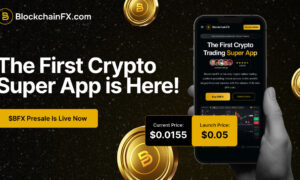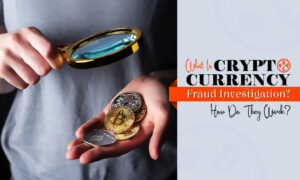As Ethereum became increasingly congested over 2021, investors began to look elsewhere for alternative blockchains that supported smart contract technology. Out of these alternatives, Solana stood out to users as not only faster than Ethereum but also much cheaper too.
Just like Ethereum, Solana can leverage smart contracts to enable DeFi applications, allow users to exchange cryptocurrency, and even mint NFTs. For some, Solana stands as the ultimate “Ethereum killer” and is pegged for long-term success.
Below, we’ll explain exactly what the network is and the best ways to buy Solana (SOL). We’ll also go over the reasons why Solana is considered so controversial.
What is Solana
Solana is a smart contract enabled public blockchain that has performance as its top priority. Solana is decentralized, scalable, and faster than Ethereum. The network uses a proof-of-stake (PoS) consensus mechanism which also incorporates a proof-of-history (PoH) model. This means users stake their cryptocurrency to help validate transactions, receiving yield as a reward.
The proof-of-history model allows many thousands of transactions to be handled by Solana every second, with demonstrations of over 50,000 TPS. As detailed in Solana’s Whitepaper Proof-of-history works by successfully implementing internal “clocks” into individual nodes that verify events and the time. Other nodes can validate these transactions individually too thanks to Solana’s Verifiable Dela Function (VDF).
This results in much faster transactions than networks like Ethereum which right now can only handle around 15 TPS. By individual nodes being able to verify and trust transaction validity, the network does not become congested and blocks can be added quicker.
Solana uses its scalability and low fees to enable a burgeoning DeFi and NFT scene as well as enable users to send and receive cryptocurrency with ease.
What is SOL (Solana Token)
SOL is the native currency of Solana. It provides the means to transfer value as well as securing the blockchain via staking. The token was first launched in March 2020 and since then has become a mainstay of the top 10 cryptocurrencies.
The total supply of SOL exceeds 500 million coins with 339 million of that currently in circulation. The rest of the supply is held by the Solana foundation.
SOL found itself firmly in the limelight in 2021 after its price rose considerably over the course of the year. Beginning at around $2 (AUD), it reached a high of $348 in November of 2021 that has so far not been surpassed.
How to buy Solana (SOL)
As one of the biggest cryptocurrencies out, you can buy Solana (SOL) on registered crypto exchanges such as Swyftx which serves customers from several countries including those in Australia and New Zealand.
The process is simple:
- Register for an account
Create an account using your name, country, email, and phone number. You will also need to create a password. It is important to use accurate information as know-your-customer checks are typically necessary.
- Locate Solana and check its price
Navigate to Solana’s trading page and take a look at the graph. Adjusting the timescale to your liking, consider whether you feel Solana’s price makes it an attractive investment opportunity for you. It is important to understand that just like with any cryptocurrency, the price of Solana can fall as well as rise.
- Purchase Solana
Once you’re happy with the price and have considered the risks and rewards, enter the amount of SOL you wish to buy in the AUD (or equivalent) input box. You will notice the SOL box automatically adjusts to show you how many tokens you will receive.
Note: there is no need to buy whole tokens of SOL. Fractions of SOL can be bought.
After your purchase, your SOL will reside in your custodial Swyftx wallet. Alternatively, you could send your cryptocurrency to a hardware wallet of your choosing such as the Ledger Nano X.
Solana concerns
There’s no denying that Solana is fast and cheap. It has proven itself capable of handling many times the number of transactions as its biggest competitor, Ethereum, while also charging users only a tiny fraction of the fees.
Nevertheless, Solana’s journey so far has not been entirely smooth sailing. The blockchain has had repeated bouts of downtime that has some users concerned about centralization. While the network is not centralized (and actively encourages more validators to join), the steep hardware and financial costs involved compared to Ethereum means it is not as decentralized.
Solana’s price has also suffered steep periods of decline, like other cryptocurrencies, during bear markets.
Takeaway
Despite the concerns, Solana continues to grow. Its speed and low fees mean it has the ability to scale in a way that Ethereum currently cannot. While no one can say for sure what the future holds for Solana, it’s success so far as been promising.



































